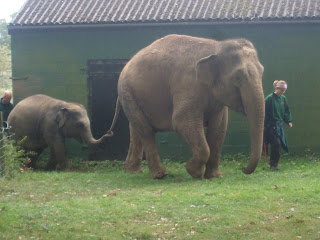Hamerton Zoo is tucked into miles of rambling farmland in Sawtry, teeming with skylarks, yellowhammers and even the occasional red kite.
I visited on a rather rainy Thursday, and was lucky enough to get up close and personal with some of the zoo’s hand-reared cheetah cubs, Makali and Tyson. This mischievous pair seemed delighted to have company, and greeted me with throbbing purrs, before winding up against my legs like over-grown kittens. The brothers – which keepers can only tell apart from the distinctive markings on their tails – are full of energy, as demonstrated by the chewed-up footballs littering their enclosure, and at one point Makali rolls onto his back, offering up his soggy tummy for a scratch. Needless to say, I’m enchanted by them.
But even on a wet day there’s still plenty to see at Hamerton, and while the zoo’s amazing pair of aardwolves (it’s one of only two zoos in Europe to house these) may be staying resolutely indoors, I’m still able to get a good look at a new pair of ring tailed lemur babies, clinging contentedly to their mothers.
Following the paths round – many of which are covered, which on a day like this is a relief – I’m chuntered at by a group of meerkats, before creeping quietly into the sloth enclosure. Here, as my eyes adjust to the dark, I suddenly realise I’m alone, and barely a metre away from a stunning toe-toed sloth, who is reclining blissfully in the most awkward position I’ve ever seen. Listening to the rain beating on the roof, I watch him breathing peacefully, admiring the whirls of his thick fur and the strength of his powerful limbs, before he turns his teddy-bear face towards me and fixes me with his liquid gaze for several seconds. I hold my breath; it’s truly a luxury to be so close to such an expressive creature, and as he yawns and drifts back off to sleep, I leave quietly, wondering who else I might meet.
The treats aren’t over yet, as the rain eases off and I head out into the back fields where the predators are kept. Blizzard, the statuesque white tiger looks ready for his close-up, lying like a model across the hill in his enclosure, while his orange partner Lady Belle looks on admiringly. I move on to visit the pair of maned wolves who are long-legged and russet, and notice behind them, in the next enclosure along, are two cheetahs, prowling the fences. Not bad to see two such different and attractive predators side by side, in a little patch of English countryside




